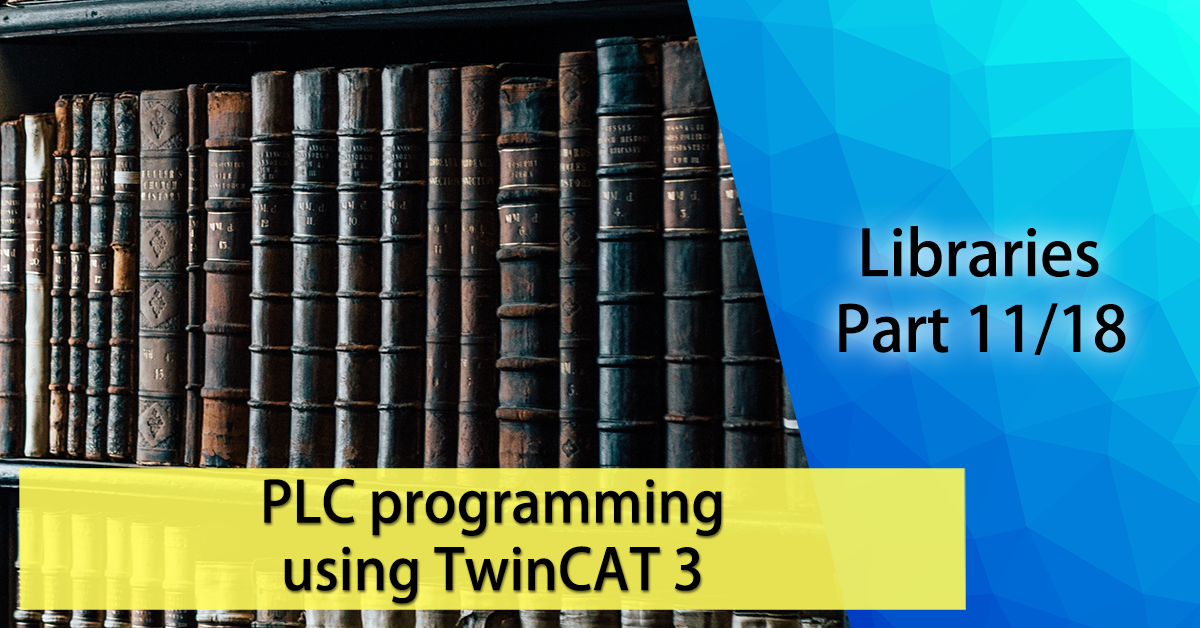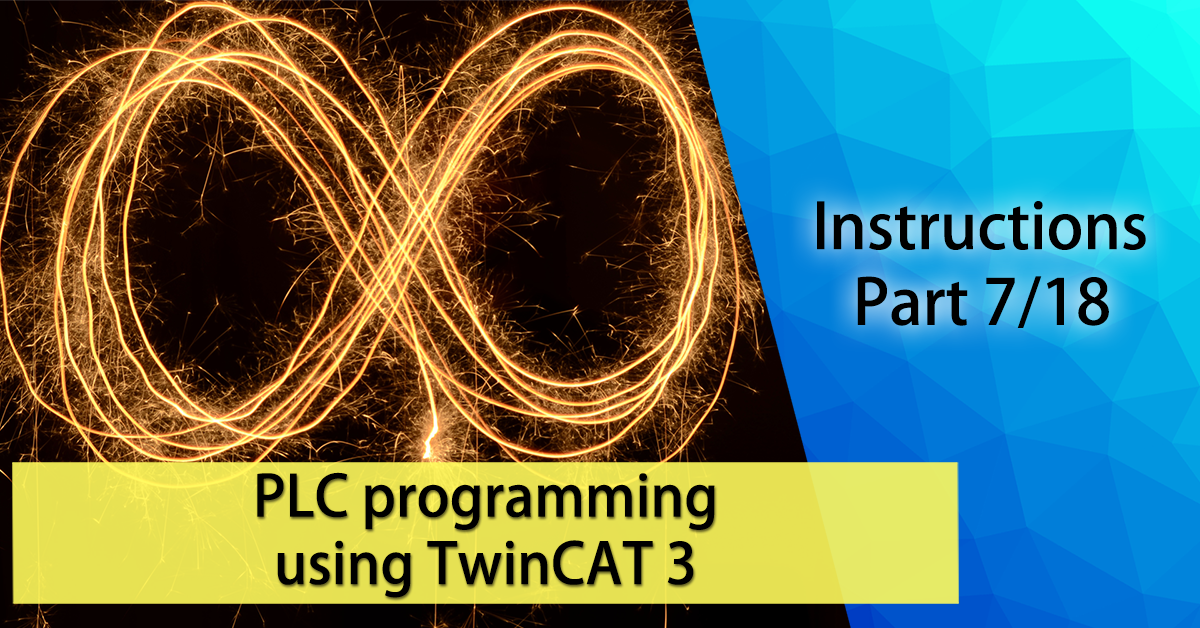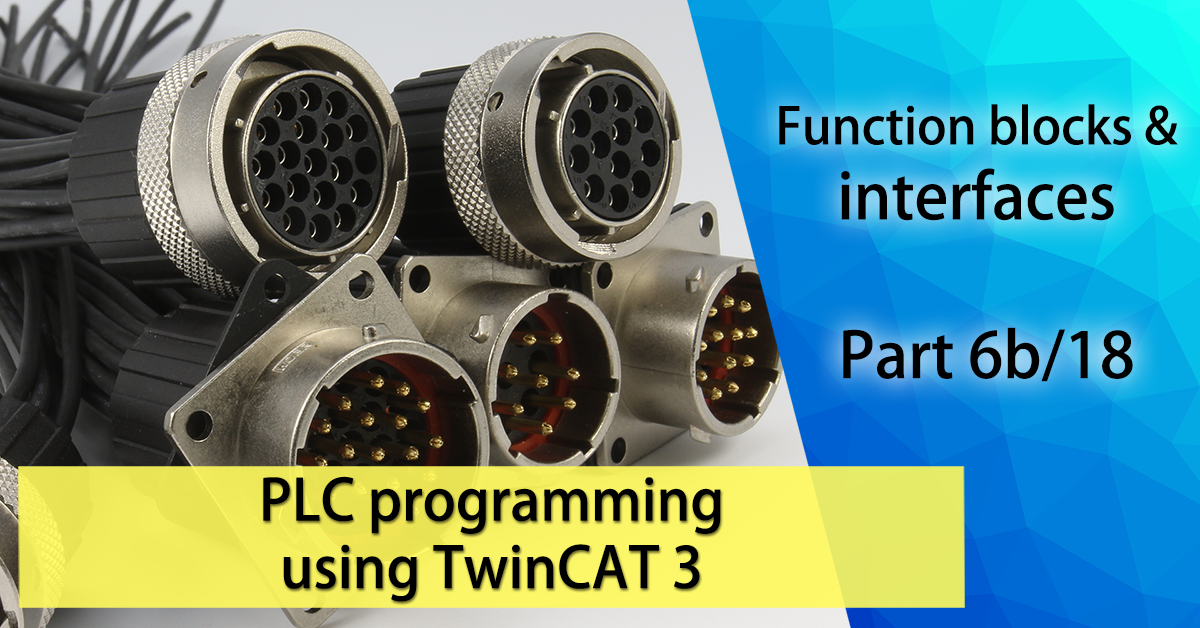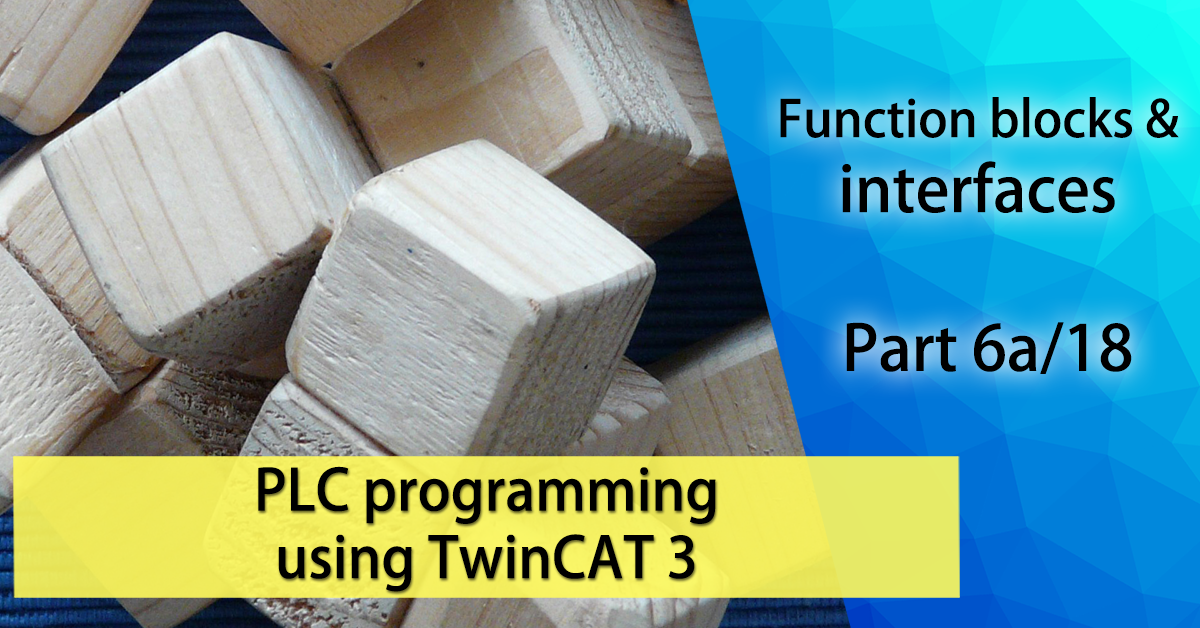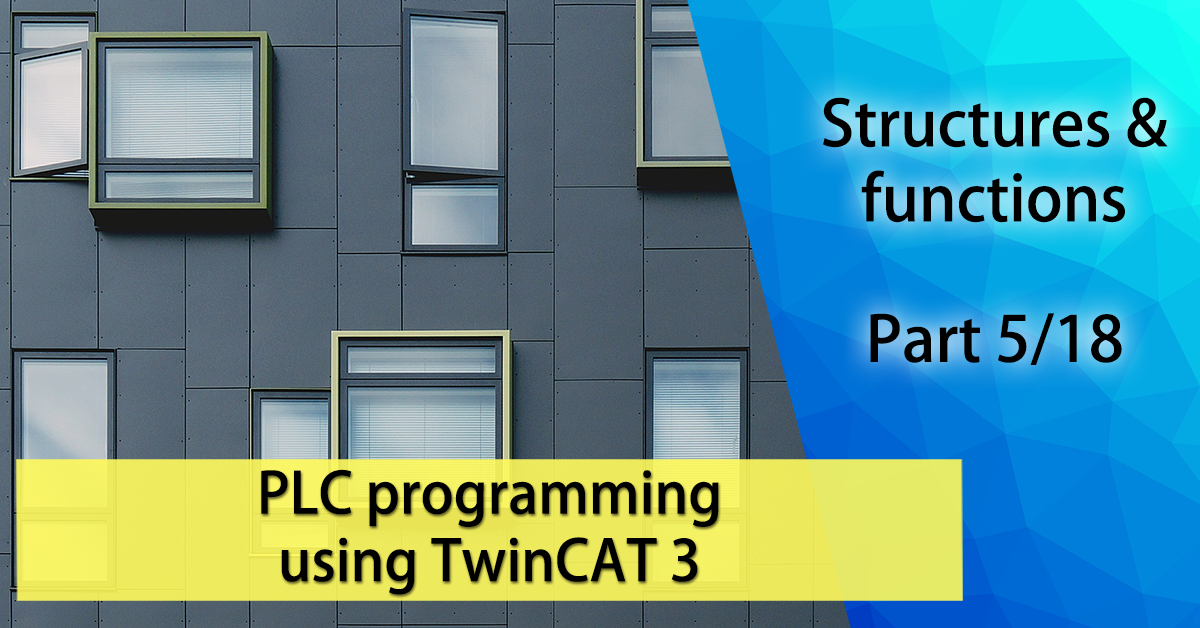Dear existing & future PLC software developers, I have published part 11 of my free PLC programming using TwinCAT 3 tutorial.
When you start to develop PLC software and you’ve worked for a few projects, you will come to a point where you will notice that certain parts of the software, like function blocks, will be copied between the projects. You’ll either do it by simple rewriting the same functions or function blocks again, or you will simply copy and paste it from one project to another. Also, once a project gets big enough, you will want to utilize something called libraries. With this we can achieve code re-use.
